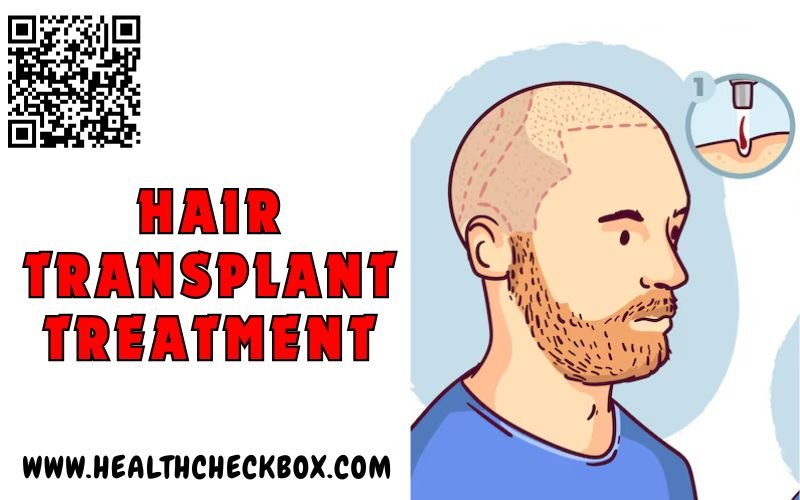
India has become a world leader in hair transplant treatment, drawing patients from around the globe. Combining highly skilled surgeons, cost-effective solutions, and cutting-edge clinics, India’s reputation in Medical Tourism continues to grow.walks through the diagnostic process, Intestine Transplant and details the treatment options available in India—including what makes India a top destination for Medical Tourism in restoration.
1. Understanding Hair Loss: Causes & Risk Factors
Before exploring hair transplant treatment in India, it’s essential to understand why hair loss occurs. Causes vary from genetics to lifestyle factors:
1.1 Genetic (Androgenetic Alopecia)
- Most common form of hair loss, in both men (male-pattern baldness) and women (female-pattern baldness).
- Typically linked to genes and hormonal imbalances, particularly dihydrotestosterone (DHT).
1.2 Hormonal Changes
- Thyroid dysfunction, pregnancy, perimenopause, and menopause can significantly impact hair growth cycles.
1.3 Stress & Illness
- Physical stressors (surgery, illness, fever) or emotional trauma can trigger telogen effluvium, a form of temporary hair loss.
1.4 Nutritional Deficiency
- Lack of protein, iron, vitamin D, and certain B vitamins may weaken hair and slow new growth.
1.5 Medications
- Drugs like anticoagulants, beta-blockers, retinoids, chemotherapy agents, and antidepressants may cause hair thinning or shedding.
1.6 Autoimmune Disorders
- Conditions like alopecia areata can lead to sudden patchy hair loss due to the immune system attacking hair follicles.
1.7 Scalp Health & Traction
- Infections like fungal scalp infections, seborrheic dermatitis, or chronic traction from tight hairstyles can damage follicles over time.
2. Recognizing the Symptoms of Hair Loss
Identifying hair loss early can improve treatment outcomes. Keep an eye out for:
- Gradual thinning on the scalp’s crown or front (especially in men).
- A widening center part or diffuse thinning (in women).
- Patchy bald spots (common in alopecia areata).
- Sparse hair growth during brushing or showering.
- Noticeably receding hairline or excessive shedding.
If such symptoms arise, it’s time to consult a specialist—often the first step in a successful hair transplant journey.
3. Medical Tourism in India: Why Choose India for Hair Transplants
India is globally recognized for Medical Tourism, particularly in cosmetic and reconstructive procedures like hair transplantation. Here’s why:
3.1 Cost-Effective Care
- A full hair transplant session in India can cost 60–80% less than in Western countries, without compromising quality.
3.2 Experienced Surgeons & Clinics
- Many clinics boast surgeons trained in top international centers, using advanced methods like FUE (Follicular Unit Extraction) and DHI (Direct Hair Implantation).
3.3 Modern Infrastructure
- Major metros such as Delhi NCR, Mumbai, Bangalore, and Hyderabad offer premium clinics with world-class facilities and accreditation.
3.4 Comprehensive Packages
- Transparent bundles often include consultations, the procedure, medications, post-care, airport pick‑ups, and accommodation—ideal for Medical Tourism.
3.5 Language & Accessibility
- With English widely spoken and numerous international dual-accredited clinics, patients find it easy to navigate the process.
3.6 Minimal Wait Times
- Unlike many countries, India offers rapid scheduling, which is critical for out‑of‑town medical tourists.
4. Getting Diagnosed: The Clinical Process
A proper diagnosis ensures the right treatment path. An accredited clinic in India follows this standard procedure:
4.1 Initial Consultation
- Medical history review (family history, medication, stress, diet).
- Physical scalp exam to assess hair thinning patterns and scalp health.
4.2 Trichoscopy
- A dermatoscope is used to magnify and photograph the scalp, allowing detailed visualization of hair follicles, miniaturization, inflammation, or scarring.
4.3 Blood Tests & Diagnostics
- Often includes thyroid, iron, vitamin D, and hormone panels to rule out underlying conditions.
4.4 Pull Tests & Scalp Biopsies
- Pull tests assess hair fragility; in ambiguous cases, a biopsy clarifies the type of hair loss, especially in scarring alopecia.
4.5 Treatment Planning
- Based on findings, doctors recommend the right path—medications, non‑surgical treatment, or surgical intervention like hair transplantation.
5. Treatment Options in India: From Medical to Surgical
Here’s a full spectrum of treatment options offered by top Indian clinics:
5.1 Non-Surgical Approaches
5.1.1 Medications
- Minoxidil (topical): Stimulates scalp blood circulation and hair growth.
- Finasteride (oral, for men): Lowers DHT levels to slow hair loss.
- Women-specific options include low‑dose spironolactone or combined oral contraceptives.
5.1.2 Platelet-Rich Plasma (PRP)
- Uses your own blood to obtain growth factors that promote hair follicle regeneration.
- Typically offered as 3–6 sessions at 4–6 week intervals.
5.1.3 Low-Level Laser Therapy (LLLT)
- Light therapy designed to boost circulation and follicle energy production.
- Ideal as a supportive treatment post‑transplant or with early thinning.
5.2 Surgical Hair Transplants
5.2.1 Follicular Unit Extraction (FUE)
- Individual follicular units are extracted and implanted directly into thinning zones.
- Benefits: Linear scar avoidance, quicker healing, minimal downtime.
5.2.2 Direct Hair Implantation (DHI)
- A variant of FUE, using a pen-like implanter (Choi pen) to allow simultaneous extraction and implantation for precision.
5.2.3 Follicular Unit Transplantation (FUT)
- A strip of scalp is harvested from the donor area and dissected into grafts.
- Suitable for extensive baldness but leaves a linear scar and requires a longer recovery.
6. Why Choose Indian Clinics for Hair Transplantation
6.1 Skilled Teams & Support Staff
- Teams are well-trained to facilitate both medical and tourist logistics.
6.2 Transparent Communication
- Pre- and post-op expectations, cost breakdown, medications, and aftercare are clearly shared.
6.3 Advanced Technology & Safety
- Most clinics are JCI or NABH‑accredited, using FDA‑approved robotic FUE devices and adhering to strict sterility protocols.
6.4 Post‑Op Aftercare
- Telemedicine follow-ups, customized hair care kits, and local partner support make aftercare seamless—even for international patients.
6.5 Real-World Results
- Clinics showcase extensive before/after galleries and have longstanding track records with foreign patients.
7. Step‑by‑Step: Hair Transplant Journey in India
- Pre‑Travel Consultation
– Online video call to assess candidacy, explain cost, plan travel logistics.
– Clinics offer Medical Tourism coordinators for itinerary assistance. - Arrival & Initial Appointment
– Clinic arranges airport pickup.
– Detailed scalp assessment and FUE/DHI planning. - Hair Transplant Surgery
– Typically a full-day outpatient procedure.
– Most patients fly home the next day or the day after. - Immediate Post‑Op Period
– Mild soreness, swelling, scabs heal in 7–10 days.
– Clinic provides instructions on cleaning, sleeping posture, and medications. - Healing & Early Growth (2–4 months)
– Transplanted hairs may shed then regrow during this period.
– PRP/LLLT often recommended to support growth. - Visible Results (6–12 months)
– Noticeable thickness, natural hair pattern becomes evident.
– Insurance of further follow-ups via telemedicine. - Ongoing Support
– Advice on lifelong maintenance, optional PRP/LLLT, and risk mitigation.
8. Cost Breakdown: What to Expect
While prices vary based on number of grafts, clinic reputation, and city, a typical breakdown is:
- Consultation: ₹1,500–₹5,000 (or free in packages)
- FUE (per graft): ₹30–₹80
- FUE total session (2,000–4,000 grafts): ₹60,000–₹320,000
- DHI: 10–20% premium over FUE
- PRP session: ₹8,000–₹15,000
- LLLT (home device): ₹15,000–₹60,000
- Medications: ₹2,000–₹6,000/month
- Medical Tourism Package: includes prep, transport, hotel, and follow‑up.
When factoring Medical Tourism, total costs—including travel and stay—remain significantly lower than similar treatments abroad.
9. Risks & Contraindications
No surgery is without risk, but Indian clinics adhere to international safety standards. Potential issues:
- Infection – Minimized by sterilization protocols
- Scarring – Especially with FUT
- Folliculitis – Treated early with antibiotics
- Shock hair loss (transient) – Scalp shedding that usually recovers in weeks
- Unnatural results – Reduced through meticulous planning and experienced surgeons
Contraindications include uncontrolled diabetes, bleeding disorders, severe hypertension, or active scalp infections.
10. Tips for Choosing the Right Clinic
- Accreditations: Look for NABH, JCI, or similar credentials.
- Surgeon Experience: Ask for years of experience and signature technique.
- Patient Reviews: Read English testimonials from international patients.
- Before/After Galleries: Independent photos showcasing natural hairlines and density.
- Clear Package Pricing: Ensure no hidden costs.
- Follow‑Up Protocol: Telemedicine and local support are vital for Medical Tourism patients.
- Language & Support Team: Confirm English fluency and availability of a travel coordinator.
12. Beyond Transplants: Hair Care & Maintenance
To preserve results:
- Post‑care Products: Use mild shampoo and scalp-friendly cleansers.
- Ongoing Treatments: Continue PRP/LLLT every few months.
- Nutritional Support: Supplements like biotin, iron, and omega-3 support hair quality.
- Healthy Lifestyle: Stress reduction, moderate exercise, and balanced diet matter.
- Medical Review: Annual check-ups to monitor hormones or nutritional status.
13. FAQs: India Hair Transplant & Medical Tourism
Q: Is a visa required for transplant patients?
Yes—medical (M‑VISA) or tourist visa with medical permission is needed. Clinics often assist visa documentation.
Q: How many days should I stay in India?
Typically 5–7 days: arrival, procedure, initial recovery, one follow-up, then departure.
Q: Is language a barrier?
No—surgeons and coordinators usually speak fluent English, and clinics offer full-service support.
Q: What if I need further sessions after going home?
Tele‑consultations are available, and local maintenance clinics or coordinating follow-ups are standard.
Q: Can women undergo hair transplants in India?
Yes—India provides specialized solutions for female hair thinning, including FUE and PRP.
14. The Road Ahead: Innovations & Trends
India is at the forefront of hair restoration:
- Robotics in FUE: Automated systems for precision graft extraction and placement.
- Stem‑Cell Therapies: Emerging adjuvant treatments to boost follicle health.
- Artificial Intelligence Planning: Systems aiding in graft placement and density simulation.
- Improved PRP Protocols: Optimized blood preparations resulting in faster, deeper growth.
As Medical Tourism evolves, expect more streamlined patient concierge, remote follow‑ups, and global partnerships.
Conclusion
If you’re experiencing hair loss and considering a hair transplant, India stands out as a premier destination for cost‑effective, technologically advanced, and patient‑centric treatment. Just partner with a well‑reviewed, accredited clinic to ensure a smooth consultation, successful procedure, and satisfying long‑term results.
More Info :- https://healthcheckbox.com/


